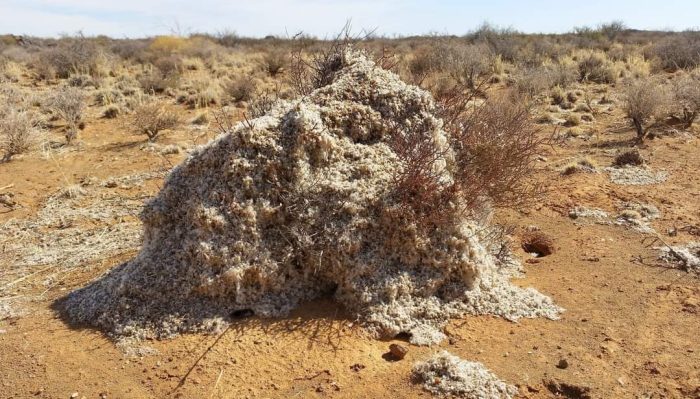
Common Harvester Ants Messor capensis are important seed dispersers and feed on berries and seeds from a wide range of plant species. The ants are hard workers and carry seeds for up to 200 m back to the stores in their nest mound! Within the mound the seeds are protected from moisture and damaging fungi, as well as other seed-eating creatures.
The ants do not eat all the seeds they collect and occasionally ant predators like the Aardvark will dig open the nest, scattering the seeds. If conditions are right many of the seeds germinate in the turned soil.

The nests of Common Harvester Ants are like small compost heaps. They contain the discarded remains of seed husks, berries and ant droppings. As they decompose, they help to fertilise the soil. Plants growing around the nest mounds often appear healthier and greener than in surrounding areas.
Thus, in summary, the burrowing and foraging activities of Common Harvester Ants have important effects on the physical and chemical properties of the soil. The soils of the Karoo are generally poor and these ants help to enrich the soil’s nutrient cycle and increase the ability of the soil to absorb and retain water. This in turn leads to better seed germination and improved productivity in many plant species. They may be tiny, but they are ecosystem engineers.
One bird species which is known to eat harvester ants is Sclater’s Lark.
There is lot more information about the genus Messor, which contains the other species of harvester ants in South Africa, on this website.
